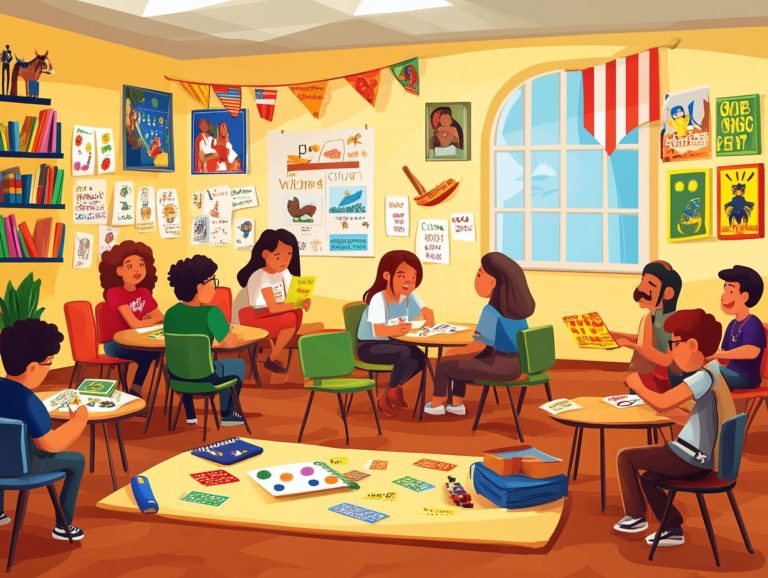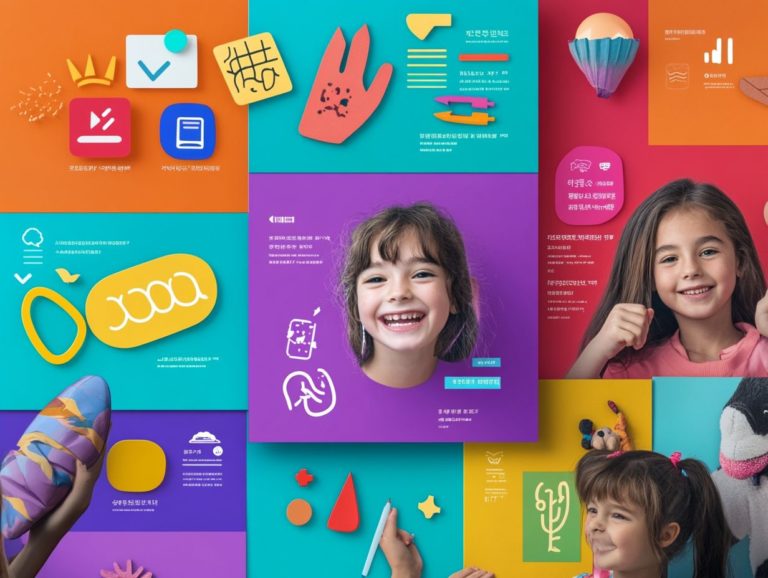How to Use Games for Language Learning
Incorporating games into language learning can revolutionize how you engage with new languages. They make the process enjoyable and enhance retention while creating opportunities for real-life practice.
This article explores the many benefits of using games. You’ll also find guidance on selecting suitable ones and strategies for integrating them seamlessly into your curriculum.
Discover tips to maximize the learning potential of these games. This ensures a dynamic and effective language-learning experience!
Contents
- Key Takeaways:
- Benefits of Using Games for Language Learning
- Choosing the Right Games for Language Learning
- Incorporating Games into Language Learning Curriculum
- Maximizing Learning with Games
- Frequently Asked Questions
- What are some benefits of using games for language learning?
- How do I choose the right games for language learning?
- What type of games can be used for language learning?
- How can I incorporate games into my language lessons?
- Do I need to be a language expert to use games in my lessons?
- Can games be used for all language levels?
Key Takeaways:
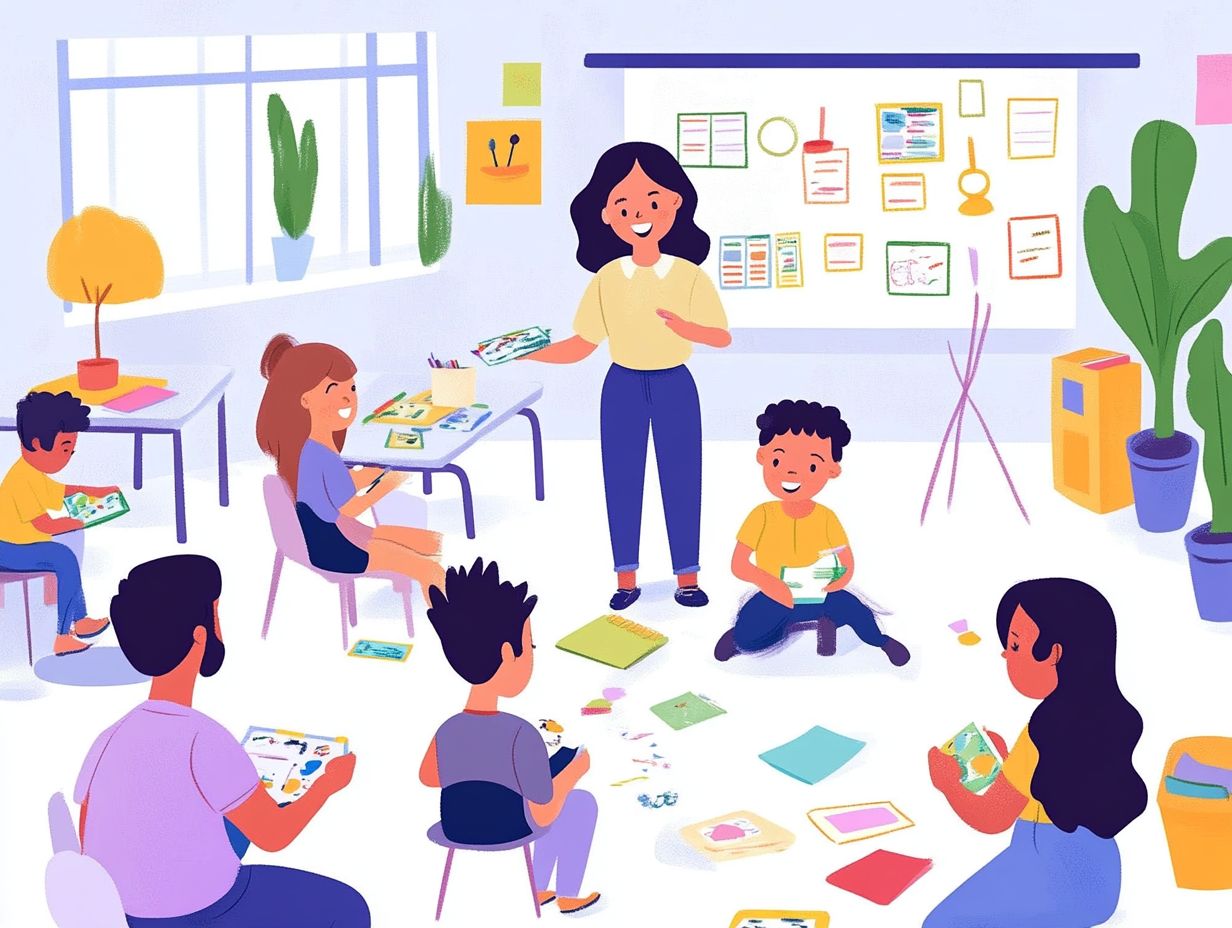
- Use games to make language learning fun and engaging!
- Choose the right games to practice real-life language skills!
- Maximize your learning by integrating games into your lessons!
Why Use Games for Language Learning?
Games offer a unique way to enhance your language learning journey. They create an engaging environment where you can develop your ability to communicate effectively, especially when you explore how to use technology for language learning.
With a range of options, from traditional activities to modern video games, you can spark interest and participation in your language classroom. These games include fun elements that motivate you and encourage exploration of new vocabulary.
For example, role-playing games let you practice conversation skills in real-life-like scenarios. On the digital front, platforms like Duolingo gamify lessons, helping you track your progress and engage in friendly competition.
Whether you re solving puzzles to improve vocabulary or joining team challenges to practice grammar, integrating games can boost your motivation and promote long-term retention.
Benefits of Using Games for Language Learning
Using games in language learning offers many benefits that can enhance your educational experience. You’ll notice improved retention of vocabulary and concepts, along with greater engagement in the learning process, especially when you explore how to use social media for language learning.
Games make learning enjoyable while nurturing essential skills applicable in real-life situations. This creates a richer and more meaningful educational environment for you.
Improved Retention and Engagement
One of the best reasons to use games in language learning is improved retention and engagement. These interactive tools capture your attention and make you want to participate actively.
By engaging in fun, repetitive activities, games help you remember better. You re more likely to retain information when you re fully involved.
Take games like Duolingo, which use a point system and exciting challenges to keep you motivated. Similarly, Scrabble sharpens your vocabulary while fostering a competitive spirit, making language learning delightful!
These examples show how dynamic learning environments can greatly enhance your enthusiasm and effectiveness in acquiring new languages.
Opportunities for Real-Life Practice

Games offer exceptional opportunities for practical language learning. They allow you to enhance your speaking skills through simulated interactions and negotiations in a safe and engaging environment.
Take role-playing games like ‘The Sims’, for example. They prompt you to engage in daily conversations, refining your skills across various scenarios, from casual exchanges to more complex social dynamics.
Negotiation-based games, such as ‘Diplomacy’, sharpen your critical language skills. You articulate your positions and persuade others while navigating alliances and conflicts.
These interactions closely mimic real-world situations, enabling you to apply your language skills in a lively context. The immersive nature of these games makes learning enjoyable and equips you to tackle real-life challenges with confidence.
Choosing the Right Games for Language Learning
Choosing the right games for language learning is vital for achieving the best educational outcomes. Several factors shape the effectiveness of games in the classroom, and this consideration is crucial for both educators and students.
When selecting games, reflect on your teaching approach, the specific language skills you wish to develop, and the interests of your students. Doing so ensures that the games you select engage your learners and create enriching experiences.
Factors to Consider
When selecting games for language learning, take key factors into account to ensure they align with the educational needs of both educators and students. This will enhance the overall learning experience.
For instance, age appropriateness is essential. Younger learners thrive on visually engaging and interactive activities, such as ‘Simon Says’ in a foreign language. Older students may prefer strategy-based games like ‘Scrabble’ or ‘Taboo’ that challenge their vocabulary and critical thinking skills.
Consider the language proficiency level of participants as well. Games like ‘Word Bingo’ can be beneficial for beginners, while advanced learners might enjoy role-playing games that demand complex language use.
Finally, ensure that the game’s complexity aligns with your learning objectives. This allows students to practice grammar and sentence structure in an enjoyable and motivating way.
Incorporating Games into Language Learning Curriculum
Incorporating games into your language learning curriculum can elevate your teaching! It offers students a more engaging and interactive experience.
This strategy makes learning fun and helps students develop their skills!
Strategies for Effective Integration
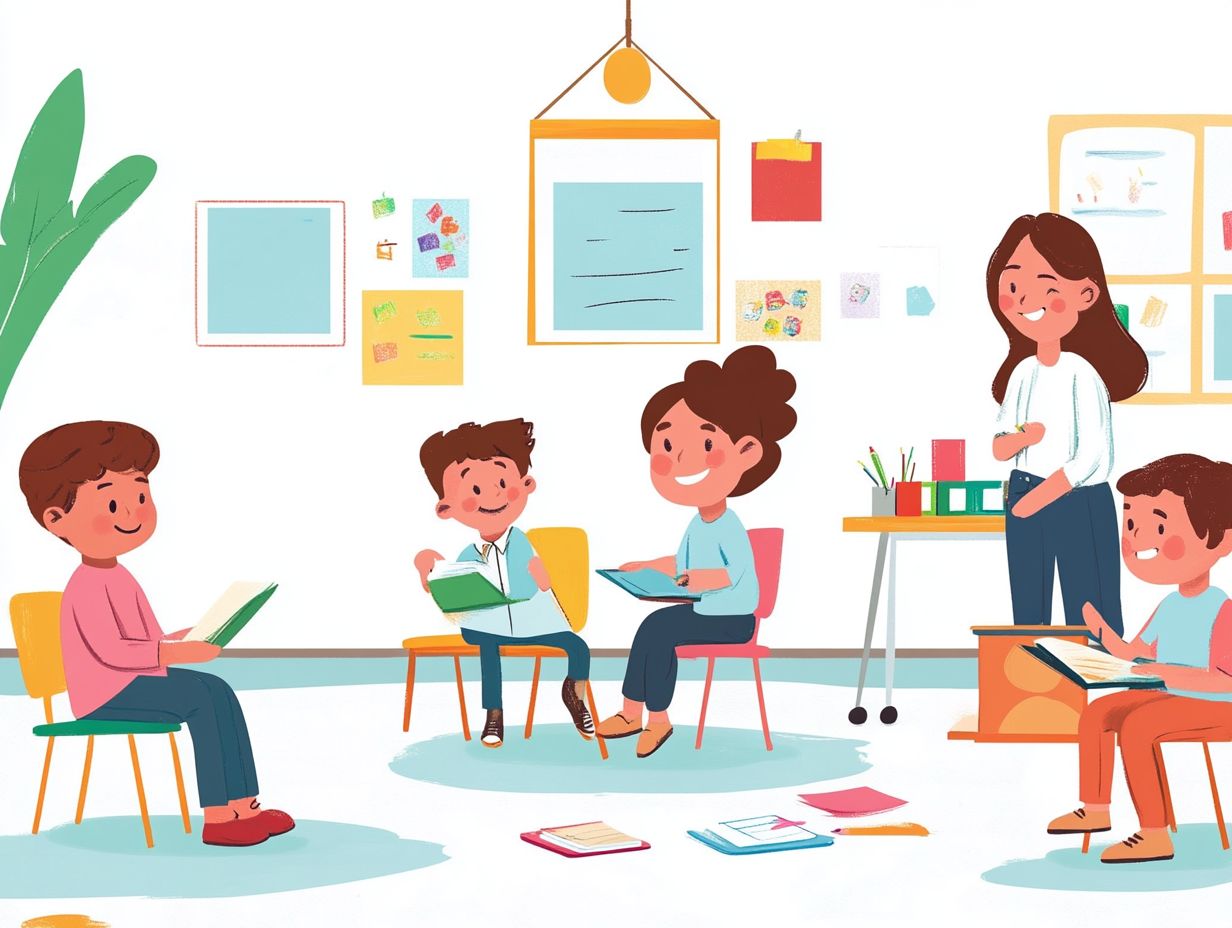
Integrating games effectively into language learning requires strategic planning and thoughtful execution. Ensure these games complement the curriculum and foster meaningful learning experiences.
Consider creating a balanced game schedule that aligns with your lesson plans. This maximizes engagement while targeting various language skills.
For example, you might schedule vocabulary-building games like Scrabble alongside grammar-focused activities. This enables students to practice different language aspects simultaneously. By incorporating games that address speaking, listening, reading, and writing skills, you ensure a comprehensive learning experience.
You can also assess learning outcomes through tailored gameplay. Use tools like quizzes or reflection journals after game sessions to evaluate the effectiveness of your strategies.
Maximizing Learning with Games
Maximizing your learning through games requires embracing essential tips and techniques. These promote the effective use of interactive tools in your language learning journey.
By doing this, both you and your educators can successfully achieve your educational objectives!
Maximize Your Gaming Experience in Language Learning!
To harness the full potential of games in language learning, explore various strategies that enhance engagement and effectiveness. This allows students to maximize their gaming experiences by focusing on clear learning objectives.
By helping students understand which specific skills or vocabulary they’ll focus on during gameplay, the entire experience becomes more targeted and meaningful. Hold structured follow-up discussions after each gaming activity to reinforce lessons learned and address any misunderstandings.
It’s essential to be mindful of game difficulty; adjusting it to match each student’s skill level ensures active participation without overwhelming anyone. For example, employing tiered challenges or offering supportive game modes can create a more inclusive and enriching learning environment.
Frequently Asked Questions
What are some benefits of using games for language learning?
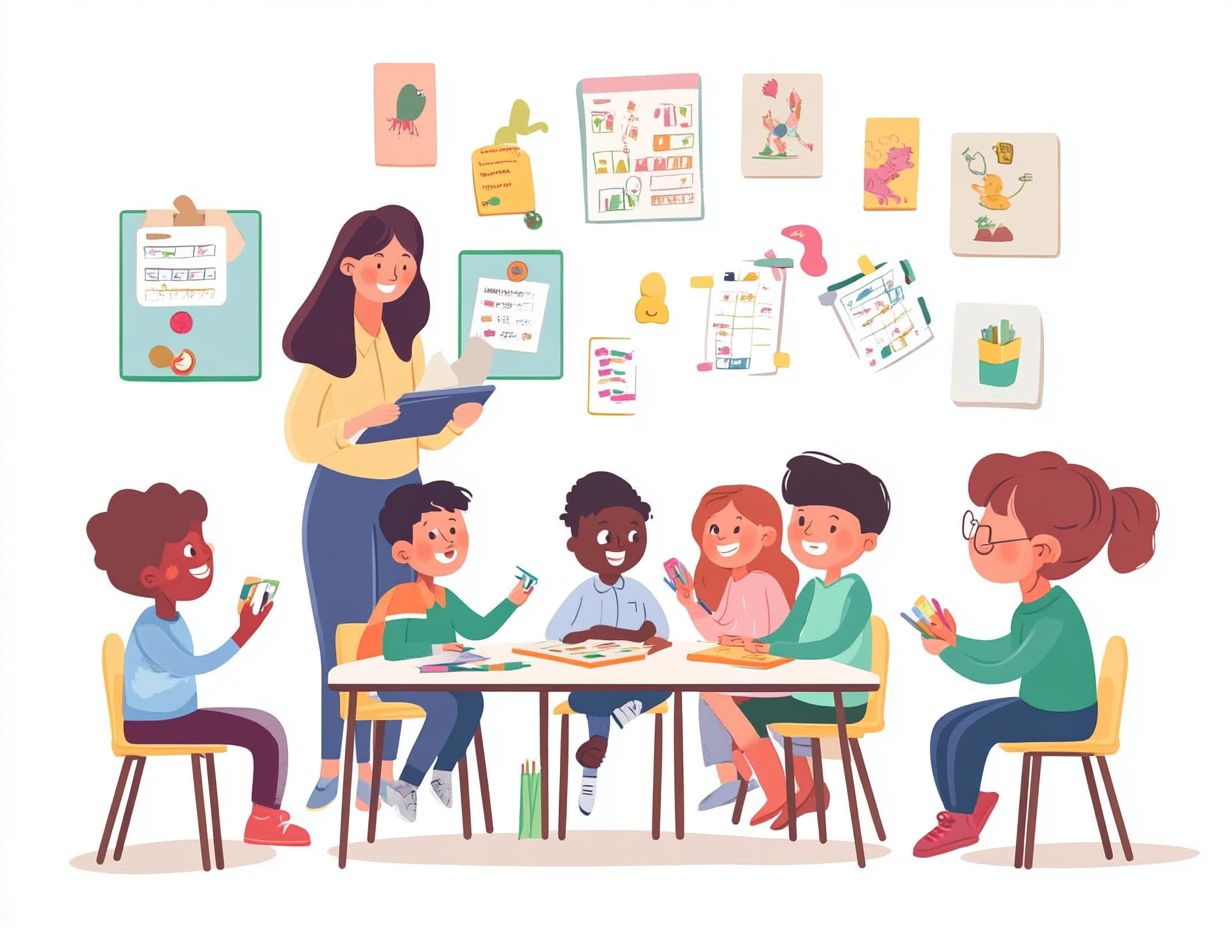
Games can make language learning exciting! They allow learners to practice without feeling self-conscious and can help improve vocabulary, grammar, and speaking skills in a more natural and contextualized way. Incorporating visual aids in language learning can further enhance this experience.
How do I choose the right games for language learning?
Consider the language level and interests of the learners first. Different games may be suitable for beginners versus advanced learners. Choose games that incorporate the target language meaningfully and align with the learning objectives.
What type of games can be used for language learning?
Various types of games can be used, such as board games, card games, digital games, and role-playing games. It’s important to choose games that involve active participation and require the use of the target language.
How can I incorporate games into my language lessons?
Incorporate games as a warm-up or review activity, as a reward for good behavior or effort, or as a way to practice specific language skills. You can even create your own games using materials relevant to your lesson!
Do I need to be a language expert to use games in my lessons?
No, you don’t need to be a language expert! As long as you have a basic understanding of the target language and the game rules, you can facilitate the activity and provide support to learners as needed.
Can games be used for all language levels?
Yes, games can be adapted for different language levels. For beginners, you may need to simplify the game or provide more support, while for advanced learners, you can make the game more challenging. Always consider the needs and abilities of your learners when choosing and adapting games.
Incorporating games into your language lessons can be incredibly rewarding. Try different games and strategies to see what works best for your students!





